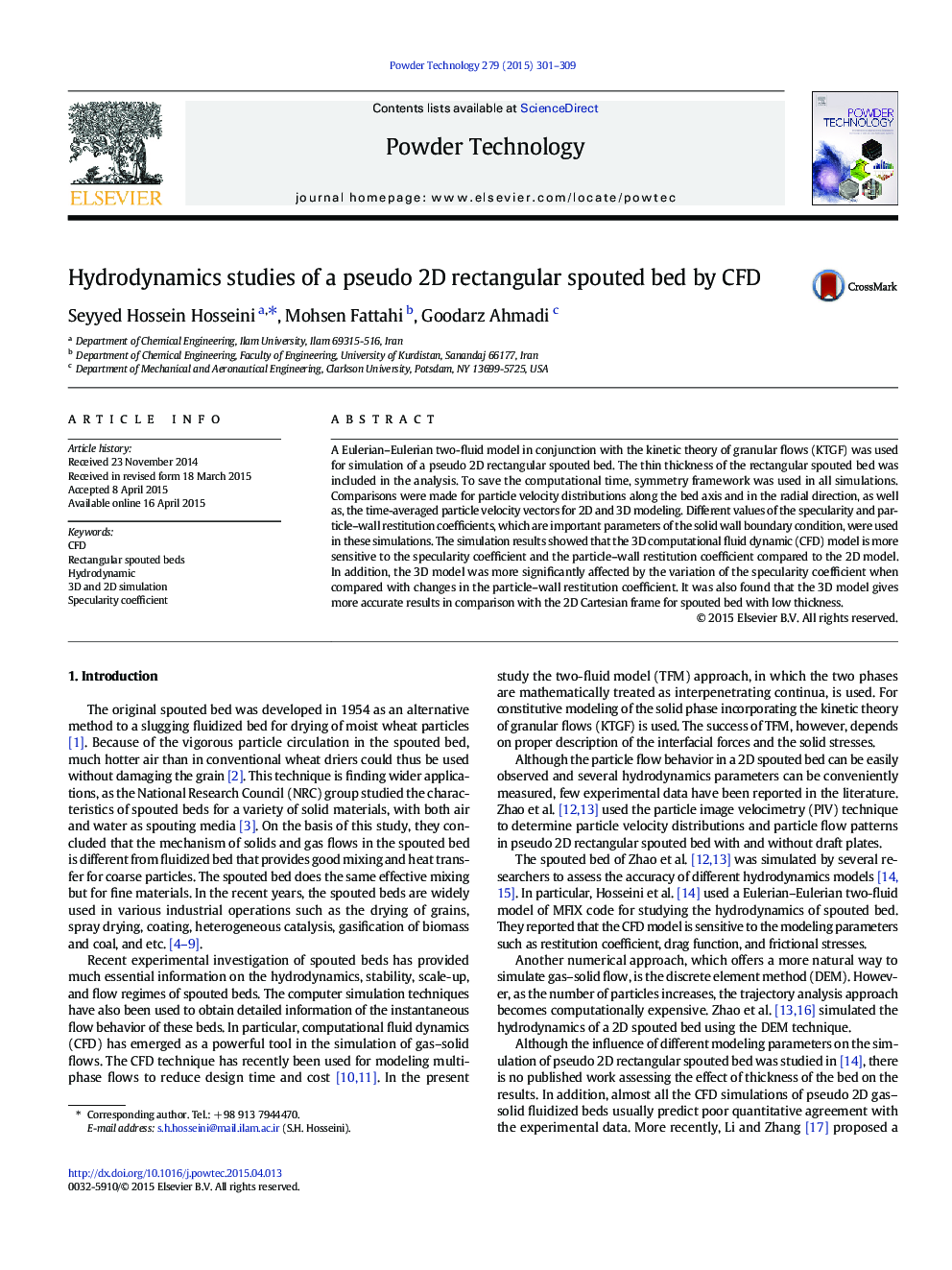| Article ID | Journal | Published Year | Pages | File Type |
|---|---|---|---|---|
| 235588 | Powder Technology | 2015 | 9 Pages |
•A pseudo 2D rectangular spouted bed was simulated in 2D and 3D frames.•Back and front walls have significant effects on the 3D CFD results.•Simulations are sensitive to specularity and particle–wall restitution coefficients.•3D model is more sensitive to the particle–wall conditions than the 2D model.•3D model is more sensitive to specularity coefficient compared to other wall parameters.
A Eulerian–Eulerian two-fluid model in conjunction with the kinetic theory of granular flows (KTGF) was used for simulation of a pseudo 2D rectangular spouted bed. The thin thickness of the rectangular spouted bed was included in the analysis. To save the computational time, symmetry framework was used in all simulations. Comparisons were made for particle velocity distributions along the bed axis and in the radial direction, as well as, the time-averaged particle velocity vectors for 2D and 3D modeling. Different values of the specularity and particle–wall restitution coefficients, which are important parameters of the solid wall boundary condition, were used in these simulations. The simulation results showed that the 3D computational fluid dynamic (CFD) model is more sensitive to the specularity coefficient and the particle–wall restitution coefficient compared to the 2D model. In addition, the 3D model was more significantly affected by the variation of the specularity coefficient when compared with changes in the particle–wall restitution coefficient. It was also found that the 3D model gives more accurate results in comparison with the 2D Cartesian frame for spouted bed with low thickness.
Graphical abstractFigure optionsDownload full-size imageDownload as PowerPoint slide
